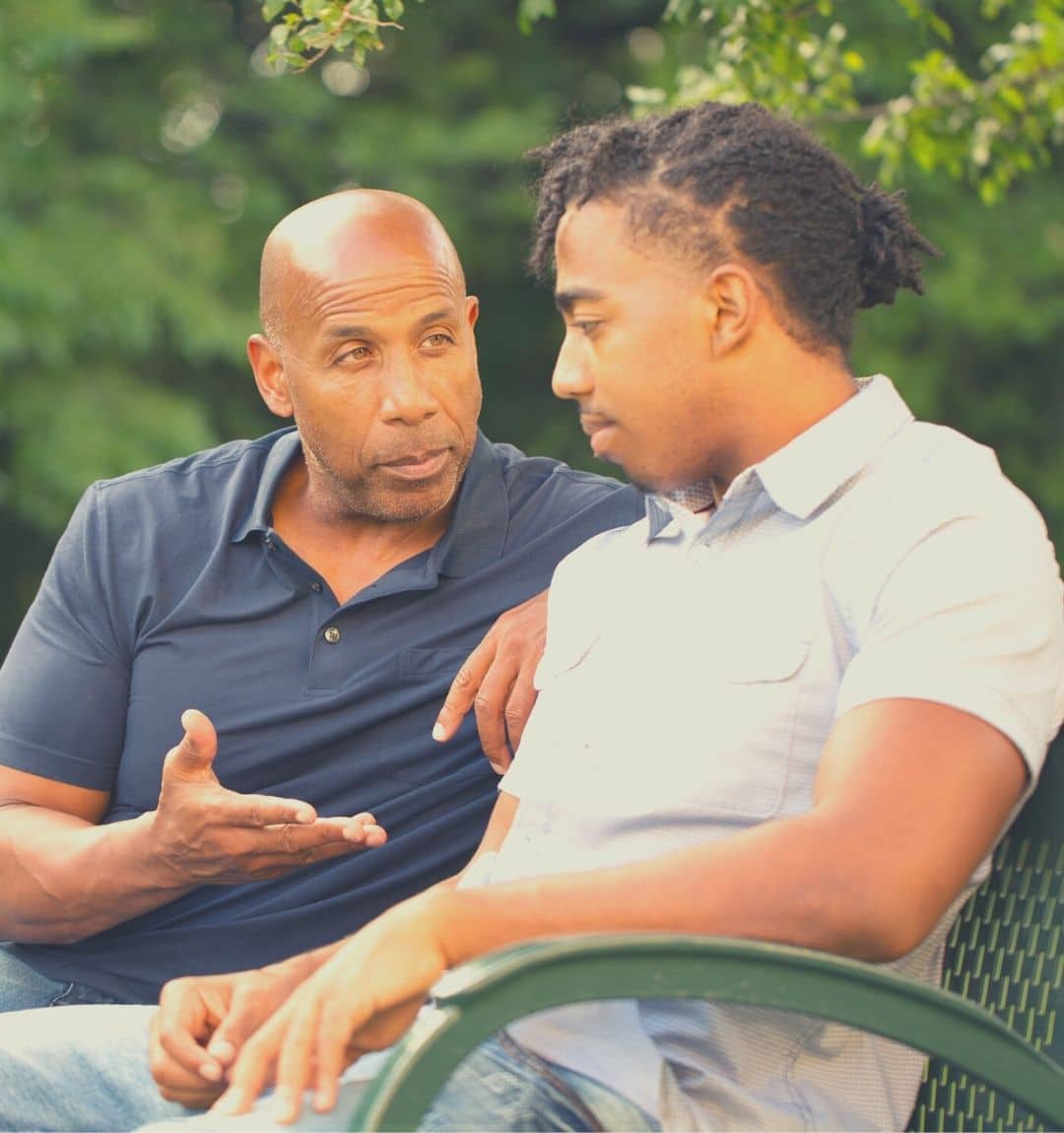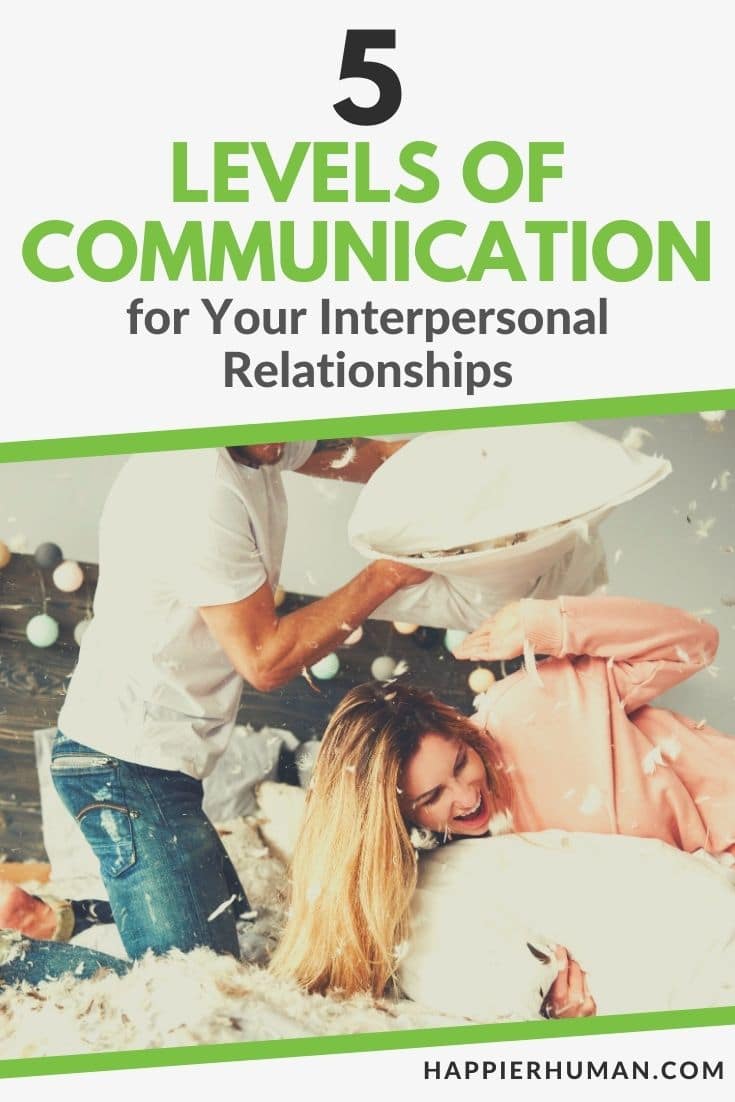There might be affiliate links on this page, which means we get a small commission of anything you buy. As an Amazon Associate we earn from qualifying purchases. Please do your own research before making any online purchase.
Communication is a vital aspect of my job. I would go so far as to say that my training and expertise as a therapist amount to nothing without good communication skills.
Communication allows me to cultivate empathy, achieve a profound understanding of my client’s needs, convey my knowledge in a useful manner, and build a solid therapeutic relationship.
But truth be told, I didn’t always navigate the 5 levels of communication as well as I thought I did.
There were times when I rushed to discuss sensitive topics without taking the time to build the conversation in that direction patiently; or asking myself if the client is ready to discuss a particular issue.
Even though my intentions were good, every mismatch between my communication level and that of the client was like a dent in the therapeutic process.
And that’s why it’s vital to understand that communication is a process that you calibrate based on how deep of a level you want to reach and how much the other person is willing to share.
What You Will Learn
What Are the 5 Levels of Communication?
Sometimes, we throw ourselves into conversations that we’re not ready for or fail to listen empathically because we’re not on the same communication level as the person in front of us.
Even though communication is one of the most natural human phenomena, this apparently simple exchange of ideas and feelings doesn’t always go as smoothly as we’d like.
Luckily, there is a way to improve your day-to-day interactions and carry out conversations in an empathic and non-intrusive manner.
“The 5 levels of communication” is an elegant system that helps you measure and navigate the depth of your social interactions.
I first came across this model when I read an article by Richard Francisco, Lecturer at Stanford Graduate School of Business.
You can find a similar model in John Powell’s book “Why Am I Afraid to Tell You Who I am?”
In essence, the ‘5 levels’ model can simplify interpersonal communication and help you avoid misunderstandings caused by a lack of empathy or poor listening.
In other words, knowing the level at which a conversation is carried out gives you a better sense of how much you can share, empathize, and listen to ensure smooth interactions.
Why Good Communication Makes You a Happier Human
Communication plays a vital role in our personal and professional interactions is something we can all agree on.
Solid communication skills allow clinicians to provide better healthcare services [1], teachers to be more effective [2], and parents to contribute to their children’s academic success [3].
You don’t even have to be a researcher or psychologist to realize the undisputed impact that communication has on your overall sense of happiness and well-being.
But good communication isn’t exclusively about having rich or insightful interactions with the people you meet every day.
Although such interactions can strengthen the bond between two people, happiness doesn’t always come from profound conversations about life, love, and other meaningful topics.

Sometimes even a short and superficial “Hey, how’s it going?” can be enough to put a smile on your face.
The quality of your everyday interactions boils down to how well you can match the other person’s vibe.
Just because a person doesn’t want to take the conversation to a deeper level doesn’t mean you can’t have good communication.
The 5 Levels of Communication
Level 1: Ritual
The first and most basic level is called ‘ritual.’ This term was initially used by Eric Berne (founder of Transactional Analysis) to describe a simple interaction between two people.
Think of ‘ritual’ as a gesture of acknowledgment or the first step towards a potentially meaningful interaction. And I say “potentially” because there are times when the interaction between two people might never exceed this level.
A ritual can be a casual “Hello, how are you?” or even a simple nod you use to greet someone you barely know.
This is the level at which you can have a conversation with almost anyone. You’re neither sharing anything important nor expecting a meaningful response from the other person. You’re just following social protocol.
To help you better understand how the 5 levels of communication work, let’s look at the following scenario.
Andrew and Mike are neighbors. They’ve been living in the same apartment building for the past couple of years. Since both work 9-to-5 jobs, they occasionally run into each other on their way to or from work.
Whenever they cross paths in the hallway or share the elevator, they always exchange a smile and a friendly “Hello!”
Even though they’ve been living in the same building for quite some time, neither feels the need to take their interaction to a deeper conversational level.
Level 2: Extended Ritual
As the name suggests, this level is an extension of the previous one.
Even though they involve a casual exchange of pleasantries, extended rituals are superficial and don’t require any emotional investment.
You’re just polite; nothing less, nothing more.
In general, level two characterizes our day-to-day work interactions. It might also be the level at which you interact with the cashier from your local supermarket or the delivery person.
Both rituals and extended rituals involve safe interactions. You don’t need to be an empathic listener or share aspects of your personal life to carry out level one or two conversations.
But just because these levels involve a superficial interaction doesn’t mean they don’t serve a purpose.
Rituals and extended rituals build trust and familiarity, creating a foundation for more in-depth interactions.
Here’s how a level two interaction between the two neighbors would look like.
Andrew: Hey, Mike!
Mike: Hey, what’s up.
Andrew: Nothing much, just got back from work. You?
Mike: Same here. Another day, another dollar.
Andrew: Well, have a nice evening!
Mike: You too!

Level 3: Surface
Level three marks the beginning of more detailed and personal communication.
When you carry out a ‘surface’ conversation, you’re no longer exchanging pleasantries with another person but discussing topics and issues you’re both interested in.
Once again, we’re talking about a level at which most of us operate daily, especially at work.
In other words, ‘surface’ conversations involve sharing concerns about work-related issues, engaging in problem-solving, discussing plans, or talking about hobbies, vacation plans, and politics.
Think of ‘surface’ conversations as the first step towards getting to know someone a little bit better. But if you want others to share different aspects of their identity, make sure you’re willing to do the same.
If the other person shares his/her opinions or hobbies, and you don’t return the gesture, sooner or later, the interaction will run into a dead end.
Let’s see how a ‘surface’ conversation between Mike and Andrew would unfold.
Mike: Hey. What’s up?
Andrew: Hey. On my way to work.
Mike: You know, we’ve been saying hello to each other for months, and I still don’t know much about you. What do you do for a living?
Andrew: Software development. How about you?
Mike: I’m a firefighter.
Andrew: Wow, that sounds exciting.
Mike: Thank you!
Andrew: Well, I’m glad we finally got to know each other a bit better.
Mike: Me too. See you around!
Andrew: See ya!
Level 4: Feelings about self
As you may have realized, a level four interaction adds depth and meaning to a conversation.
You’re not just making small talk; you’re sharing emotions and creating a space where the other person can do the same.
Since you already know each other’s hobbies, interests, and opinions, you feel safe enough to take a risk and delve into a more profound interaction.
It’s about making emotional investments that can pave the way for a potentially meaningful relationship.
But with higher investments come higher risks.
Level four communication requires openness and empathic listening.
You’re not sure how the other person will react once he/she gets to know the real you.
You’re not sure whether he/she will like or accept you.
That’s why level four is a level of risk-taking.
Let’s get back to Andrew and Mike for a moment.
Andrew: Hey, man!
Mike: Hey…
Andrew: You seem upset. Is everything ok?
Mike: Well, I almost died yesterday.
Andrew: Oh, wow! What happened!
Mike: I was evacuating residents from a building on fire, and a wooden beam fell right next to me. I had my helmet and suit on, but it was still scary. Although these things happen quite often in my line of work, it’s kind of challenging to get used to it. When you’re overwhelmed with fear, you begin to question your career path.
Level 5: Feelings about each other
This is the most profound and challenging level to navigate.
You’re not just sharing feelings about yourself and providing an empathetic ear for the other person; you exchange feedback, reflect feelings, or offer clarity regarding a situation that the other person is dealing with.
Level five communication requires more than just empathy; it requires compassion.
Since sharing feelings about each other involves risk and vulnerability, you need someone you know well and trust. Someone with whom you feel comfortable enough to share intimate aspects of your life.
In general, this is the kind of conversation you have with a best friend, family member, or life partner.
Building on the previous example, let’s see how a level five interaction between Andrew and Mike looks.
Andrew: I know it must be scary, and I can’t even begin to imagine what it’s like to risk your life to save others. But I don’t think fear makes you less suited for this job. What matters most is that you can do your job even though you sometimes feel overwhelmed by fear. And that’s courage.
Mike: I guess you’re right. Maybe I should remind myself that fear doesn’t make me less capable of doing my job well.
Andrew: I would go as far as to say fear can sometimes make you sharp. It keeps you aware of the danger you’re dealing with.
Mike: Thanks! I really needed to get out of my head for a moment, and your perspective proved extremely useful. I’m glad I shared this with you.
Andrew: Glad to be of help. It means a lot to know that you trust me enough to share your struggles.
Final Thoughts on the 5 Levels of Communication
While the first three levels help you build trust and create a comfortable atmosphere, the last two levels add depth and purpose to your interaction.
But just because the first three levels involve a somewhat superficial interaction doesn’t mean you should go out of your way to add more depth to the conversation.
Keep in mind that each level has a clear purpose depending on the context, and also the needs and availability that each person ‘brings to the table.’
Long story short, by navigating the 5 levels of communication, you can build meaningful interactions at a steady pace and enjoy pleasant conversations even if you’re not getting into feelings or ‘deep’ topics.

Alexander Draghici is a licensed Clinical Psychologist, CBT practitioner, and content writer for various mental health websites. His work focuses mainly on strategies designed to help people manage and prevent two of the most common emotional problems – anxiety and depression.

References
[1] A. L. Back, E. K. Fromme and D. E. Meier, “Training Clinicians with Communication Skills Needed to Match Medical Treatments to Patient Values,” Journal of the American Geriatrics Society, vol. 67, no. S2, pp. 435-441, 2019.
[2] A. C. Okoli, “Relating Communication Competence to Teaching Effectiveness: Implication for Teacher Education,” Journal of Education and Practice, vol. 8, no. 3, pp. 150-154, 2017.
[3] Y. Zhang, “Quality Matters More Than Quantity: Parent–Child Communication and Adolescents’ Academic Performance,” Frontiers in Psychology, 2020.

